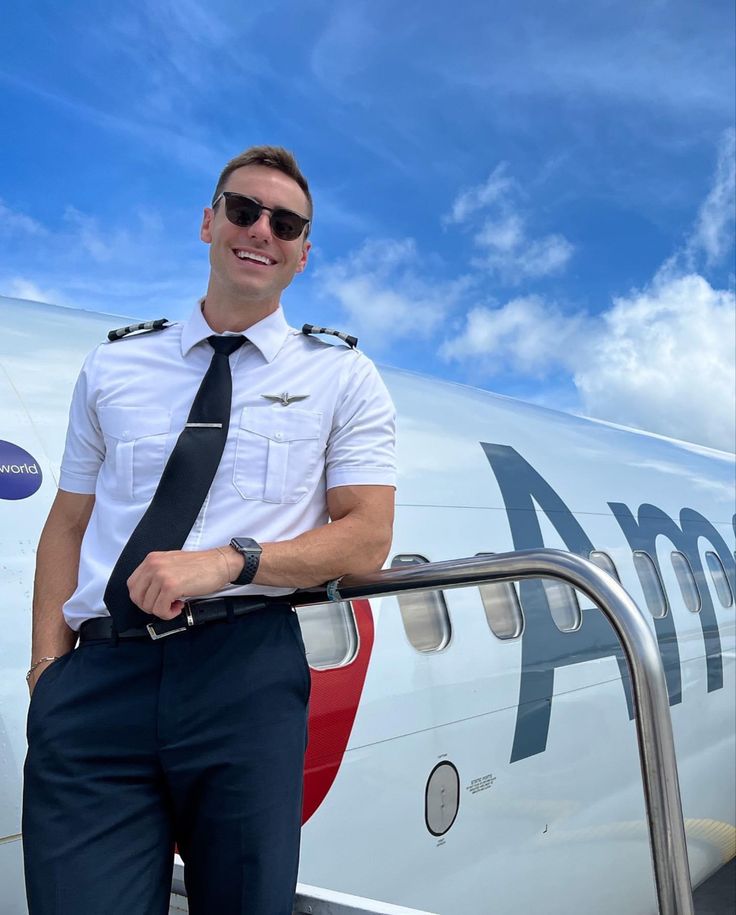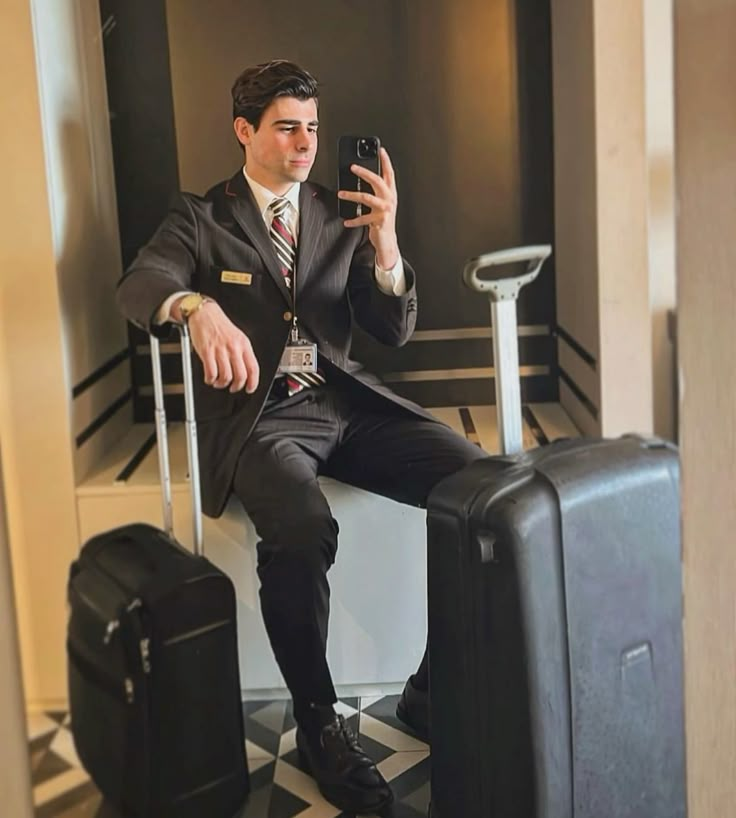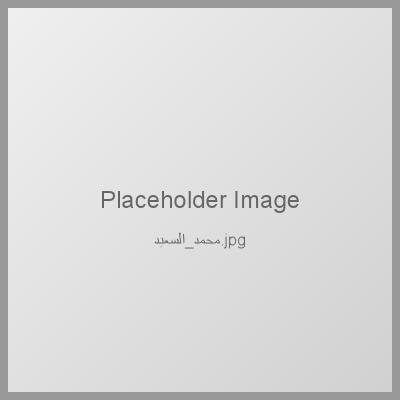
The Future of Aviation Workwear: Innovations for the Saudi Market in 2025
As Saudi Arabia continues its ambitious aviation expansion under Vision 2030, the Kingdom's airlines and airports face unprecedented opportunities to integrate cutting-edge innovations into their operational infrastructure—including the workwear worn by thousands of aviation professionals. Traditional approaches to aviation uniforms are being rapidly transformed by technological advances, creating new possibilities for enhanced functionality, improved staff experience, and operational advantages.
These innovations arrive at a pivotal moment for Saudi aviation, as the sector navigates unique challenges including extreme climate conditions, expanding international operations, and evolving passenger expectations. Forward-thinking Saudi carriers recognize that next-generation workwear represents not merely updated clothing, but strategic operational assets that can address multiple critical objectives simultaneously.
This article examines the emerging technological innovations reshaping aviation workwear with specific focus on applications relevant to the Saudi market. From advanced materials engineered for extreme temperatures to integrated smart technologies enhancing operational capabilities, we explore how these developments can be strategically implemented by Saudi carriers seeking competitive advantage in the rapidly evolving global aviation landscape of 2025 and beyond.

Next-generation aviation workwear integrates advanced materials, smart technology, and traditional design elements to create uniforms that enhance operational capabilities
Technological Innovations in Aviation Workwear
The foundation of future aviation uniforms lies in material science breakthroughs that dramatically expand performance capabilities while enhancing comfort and functionality.
Advanced Material Developments
Cutting-edge textiles are revolutionizing aviation workwear performance:
- Phase-change materials (PCMs) actively regulating body temperature in variable environments
- Graphene-enhanced fabrics providing exceptional strength-to-weight ratio with enhanced conductivity
- Biomimetic textiles replicating natural structures for improved functionality
- Self-cleaning nanotechnology reducing maintenance requirements while maintaining appearance
These material innovations create particular value for Saudi aviation operations. Phase-change materials, for example, offer significant advantages for staff transitioning between air-conditioned terminals and extreme outdoor temperatures at Saudi airports, while self-cleaning treatments reduce maintenance requirements in dusty desert environments.
Enhanced Protective Technologies
New protection solutions address aviation-specific hazards:
- Advanced UV protection treatments with extended durability for outdoor operations
- Next-generation flame-resistant technologies with improved comfort and breathability
- Impact-absorbing materials integrated into high-risk operational roles
- Chemical and fluid repellent technologies with reduced environmental impact
These protective innovations address critical safety concerns while improving staff comfort. For Saudi carriers, advanced UV protection offers particular benefits for ground operations staff exposed to intense solar radiation, while improved flame-resistant technologies enhance safety without compromising comfort in high-temperature environments.
Ergonomic Design Advancements
Biomechanical research is transforming garment construction:
- 4D-mapped movement patterns informing articulated garment construction
- Role-specific strain reduction features addressing common aviation injuries
- Variable compression technologies enhancing circulation during extended duties
- Anthropometrically-optimized sizing systems improving fit across diverse body types
These ergonomic advances directly impact staff wellbeing and operational effectiveness. Saudi carriers implementing these innovations report reduced fatigue and musculoskeletal complaints among staff, with corresponding improvements in service delivery and reduced absenteeism, particularly during extended duty periods.
Manufacturing Technology Innovations
Advanced production techniques enable new functionality:
- 3D knitting and weaving technologies creating seamless garments with enhanced durability
- Ultrasonic bonding techniques replacing traditional seams for improved comfort
- Digital printing advancements enabling sophisticated branding with reduced environmental impact
- Mass customization platforms delivering personalized fit with operational efficiency
These manufacturing advances enable new possibilities for Saudi aviation workwear. Seamless construction techniques offer particular advantages in high-temperature environments by eliminating abrasion points, while mass customization platforms allow Saudi carriers to provide improved fit for staff while maintaining visual consistency.
Climate-Specific Adaptations for Saudi Operations
Saudi Arabia's extreme climate presents unique challenges that require specialized workwear solutions for aviation staff operating in demanding conditions.
Extreme Heat Performance Technologies
Specialized innovations address high-temperature operations:
- Advanced evaporative cooling systems providing active temperature regulation
- Infrared-reflective technologies reducing heat absorption without sacrificing appearance
- Microclimate management fabrics enhancing air circulation in enclosed layers
- Heat stress monitoring integration alerting to dangerous core temperature increases
These heat-specific technologies address critical safety concerns for Saudi aviation operations. With summer temperatures regularly exceeding 45°C at major airports, these innovations provide essential protection while maintaining professional appearance and operational capabilities.
Desert Environment Adaptations
Specialized designs address Saudi-specific environmental challenges:
- Advanced dust filtration integration for respiratory protection during sandstorm conditions
- Sand-resistant fabric treatments preventing abrasion damage and infiltration
- Static electricity management for low-humidity operational environments
- Enhanced moisture management supporting thermoregulation despite rapid evaporation
These desert adaptations address the unique operational challenges of Saudi aviation environments. Integrated dust protection provides particular benefits during seasonal sandstorm periods, when standard uniforms offer insufficient protection for staff working in exposed positions.
Day-Night Temperature Variation Solutions
Adaptive approaches address significant temperature fluctuations:
- Adaptive insulation technologies automatically adjusting to temperature changes
- Modular layering systems offering operational flexibility through shift transitions
- Thermal property transition fabrics changing characteristics with temperature
- Intelligent ventilation structures providing passive climate regulation
These adaptive solutions address the significant temperature variations experienced across 24-hour operations in Saudi environments. Staff working shifts that span both daytime heat and nighttime cooling benefit particularly from these technologies, maintaining comfort without requiring complete uniform changes.
Hydration Support Integration
Innovative approaches support critical hydration needs:
- Hydration monitoring sensors tracking fluid levels and providing alerts
- Integrated hydration systems enabling convenient fluid access for mobile staff
- Electrolyte-releasing fabric treatments supporting mineral replacement
- Cooling hydration accessories combining fluid provision with temperature regulation
These hydration innovations address a critical health consideration for Saudi aviation operations. With extreme heat creating significant dehydration risks, these technologies support staff health while enhancing operational resilience during challenging conditions.
Smart Uniform Integration
The integration of digital technologies into aviation workwear creates new operational capabilities that extend uniform functionality beyond traditional purposes.
IoT Integration Applications
Connected uniform technologies enhance operational awareness:
- Location tracking implementation enhancing staff deployment and emergency response
- Environmental monitoring sensors detecting hazardous conditions in operational areas
- Biometric data collection supporting staff health and fatigue management
- Digital twin integration enabling comprehensive operational visualization
These IoT applications transform uniforms into valuable data collection points within aviation ecosystems. Saudi carriers implementing these systems report improved operational awareness and enhanced emergency response capabilities, particularly in sprawling airport environments where staff location visibility creates significant advantages.
Communication Technology Integration
Embedded communication systems enhance operational coordination:
- Voice-activated communication systems enabling hands-free coordination
- Haptic feedback notification for high-noise environment alerts
- Integrated translation capabilities supporting international passenger interactions
- Bone conduction audio systems maintaining environmental awareness
These communication innovations address coordination challenges in complex aviation environments. For Saudi carriers operating international hubs with diverse passenger populations, integrated translation capabilities offer particular value, enabling staff to provide superior service across language barriers.
Digital Identification and Security
Integrated authentication enhances security and access control:
- Biometric authentication integration eliminating credential vulnerabilities
- Dynamic authorization visualization indicating access permissions through display elements
- Secure NFC/RFID integration streamlining system interactions
- Tamper-evident technologies preventing uniform misuse
These security elements transform uniforms into sophisticated access control systems. For Saudi aviation operations with complex security requirements, these technologies streamline staff movement through secure zones while enhancing overall security posture through continuous authentication.
Passenger Service Enhancements
Customer-facing technology integration improves service delivery:
- Augmented reality information displays providing staff with passenger-specific data
- Integrated payment processing enabling mobile transactions
- Real-time language translation supporting international passenger communication
- Service history access enabling personalized passenger interactions
These service technologies enhance the passenger experience while improving operational efficiency. Saudi carriers implementing these systems report significant improvements in service consistency and passenger satisfaction, particularly for premium services where personalization creates competitive differentiation.
Cultural Considerations in Future Design
Successful implementation of workwear innovations in Saudi aviation requires thoughtful integration with cultural requirements and preferences specific to the Kingdom's context.
Modern Heritage Integration
Contemporary approaches to cultural expression in technical workwear:
- Digital textile printing techniques enabling sophisticated cultural patterns on technical fabrics
- 3D-engineered textile structures incorporating traditional patterns in performance materials
- Abstracted heritage elements compatible with advanced manufacturing methods
- Traditional color application in advanced chromatic technologies
These approaches enable meaningful cultural expression while embracing technological advancement. Leading Saudi carriers are developing sophisticated approaches that reference traditional Saudi design elements through modern techniques, creating authentic cultural connection without compromising technical performance.
Modest Design with Technical Innovation
Advanced solutions addressing modesty requirements with performance benefits:
- Advanced cooling in modest layering systems maintaining comfort while ensuring appropriate coverage
- Movement-optimized modest designs eliminating operational restrictions
- Weight reduction technologies minimizing burden of additional fabric layers
- Specialized interface systems between modest garments and technical equipment
These innovations specifically address the intersection of cultural requirements and technical performance. By developing sophisticated approaches to modest workwear that incorporate advanced materials and construction, Saudi carriers ensure staff comfort and capability while honoring important cultural considerations.
Vision 2030 Alignment in Design Expression
Future-focused cultural expression supporting national transformation:
- Forward-looking Saudi identity expression balancing tradition with innovation
- Global-local design dialogue positioning Saudi aviation in international context
- Innovation showcase opportunities through pioneering workwear approaches
- Saudi design leadership elements demonstrating cultural confidence
These alignment approaches position aviation workwear within broader national narratives. By developing uniform programs that visually express Vision 2030's balance of heritage preservation and forward-looking innovation, Saudi carriers support national objectives while creating distinctive visual identity.
User Acceptance Optimization
Strategies ensuring staff embracement of technological innovations:
- Cultural calibration of technology interfaces ensuring intuitive interaction
- Privacy-sensitive data collection approaches respecting cultural boundaries
- Customization options within system parameters providing personal agency
- Traditional-contemporary balance considerations avoiding excessive futurism
These acceptance strategies address critical implementation success factors. Saudi carriers introducing advanced workwear innovations find that thoughtful attention to cultural context and user preference significantly enhances adoption rates and effective utilization of new capabilities.
Implementation Framework for Saudi Carriers
Translating workwear innovations into operational reality requires structured implementation approaches that address the unique considerations of Saudi aviation environments.
Strategic Innovation Assessment
Evaluation frameworks for identifying highest-value applications:
- Role-specific innovation mapping identifying priority applications by position
- Operational impact evaluation quantifying potential improvement metrics
- Saudi-specific value assessment prioritizing locally-relevant innovations
- Technology readiness evaluation ensuring implementation feasibility
These assessment approaches prevent technology-driven implementation without clear operational benefits. Saudi carriers report greatest success when innovation adoption follows structured evaluation identifying specific operational improvements rather than implementing technology for its own sake.
Phased Implementation Strategies
Structured approaches managing transition complexity:
- Role-prioritized rollout planning targeting highest-impact positions first
- Technical capability sequencing building from foundational to advanced features
- Parallel systems management during extended transition periods
- Operational testing cycles validating innovations before full deployment
These phased approaches minimize operational disruption while enabling progressive improvement. Saudi carriers typically implement climate adaptation technologies first, addressing immediate operational challenges, before progressing to more sophisticated smart uniform capabilities.
Staff Engagement and Training
Comprehensive approaches ensuring effective utilization:
- User-centered design involvement incorporating staff perspectives
- Phased capability introduction training preventing feature overwhelm
- Benefit demonstration programs building user appreciation
- Ambassador identification and development supporting peer learning
These engagement approaches directly impact implementation success. Saudi carriers find that early staff involvement and comprehensive training significantly enhance adoption rates and proper utilization of advanced uniform capabilities, particularly for technology-enhanced features.
Technical Infrastructure Development
Supporting systems required for advanced uniform functionality:
- Data management architecture supporting information collection and analysis
- Connectivity infrastructure requirements enabling real-time communication
- Security protocol development protecting sensitive information
- Integration with existing operational systems creating unified platforms
These infrastructure elements are critical for realizing advanced uniform potential. Saudi carriers implementing smart uniform capabilities are investing in robust supporting systems, recognizing that the value of connected workwear depends on appropriate backend infrastructure to process and utilize collected data.
ROI Measurement Frameworks
Value assessment approaches for innovation investments:
- Multidimensional benefit tracking beyond direct cost impacts
- Operational efficiency measurement quantifying service improvements
- Staff wellbeing and retention impacts calculating indirect benefits
- Brand and passenger experience valuation assessing market differentiation
These measurement approaches ensure appropriate innovation investment. Saudi carriers implementing comprehensive ROI frameworks find that advanced workwear delivers value across multiple dimensions, justifying investment through combined benefits rather than single-factor cost assessments.
Conclusion: Strategic Opportunity for Saudi Aviation Leadership
For Saudi carriers navigating Vision 2030's ambitious aviation expansion, next-generation workwear innovations represent a significant opportunity to address operational challenges while demonstrating technological leadership. By thoughtfully implementing advanced materials, climate-adaptive technologies, smart systems, and culturally-appropriate designs, the Kingdom's airlines can develop uniform programs that enhance operational capabilities while supporting brand differentiation in the global marketplace.
The most successful approach combines strategic needs assessment with phased implementation planning. Rather than pursuing technology for its own sake, leading Saudi carriers are identifying specific operational challenges—from extreme climate conditions to complex service coordination—and implementing targeted innovations that deliver measurable improvements in these priority areas.
As the global aviation industry continues its technological transformation, workwear innovation offers Saudi carriers a visible demonstration of their commitment to operational excellence and staff wellbeing. By developing sophisticated approaches that balance technical advancement with cultural authenticity, the Kingdom's airlines can establish leadership in this emerging field while creating competitive advantage through enhanced operational capabilities, improved staff experience, and distinctive brand expression.
